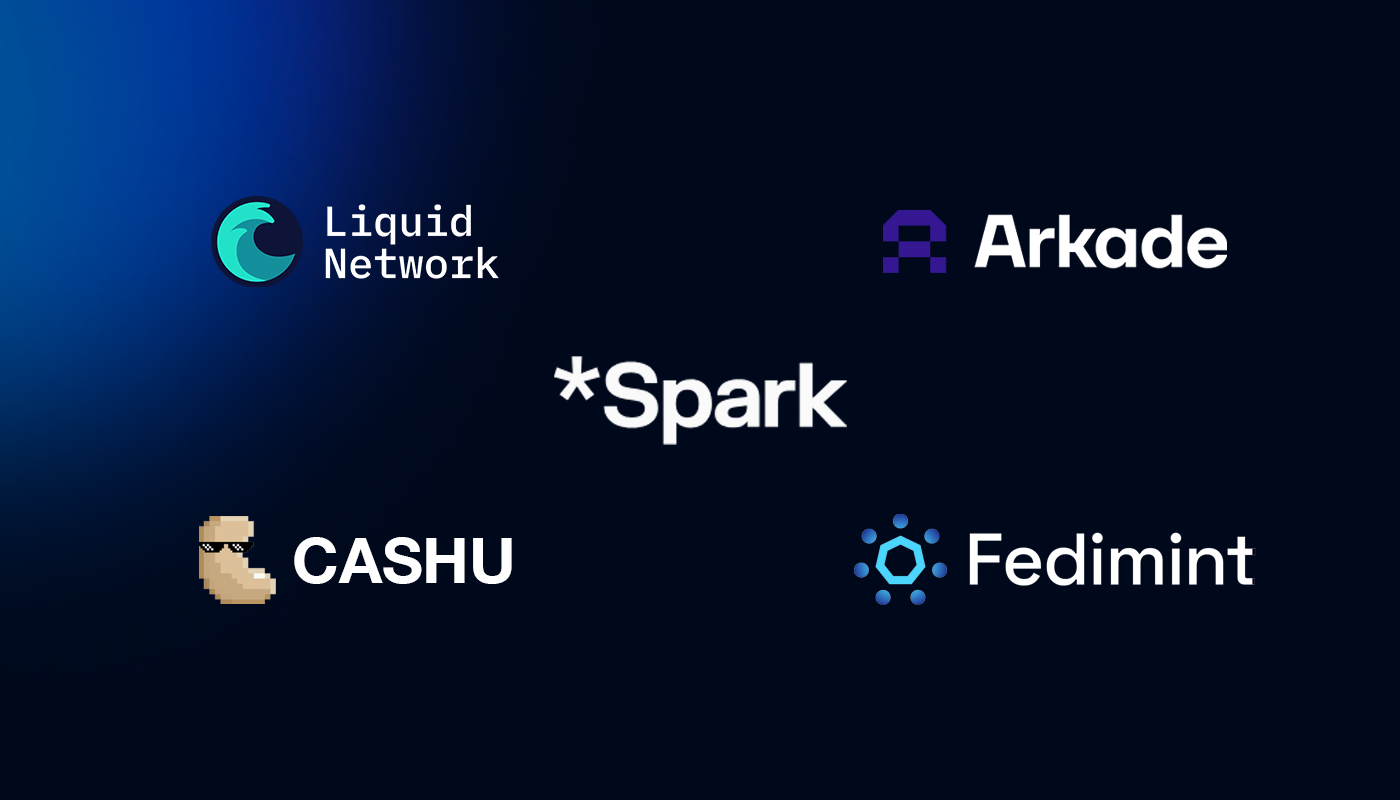Lightning is the common language of Bitcoin ⚡ New subnetworks are emerging to offer different last-mile solutions, and Breez is where it all comes together. 50+ partners already use the Breez SDK to move value with Lightning. But which implementation is best for you? In his latest post, @roy breaks down the advantages of the Spark and Liquid implementations.
Spark or Liquid? You Can’t Go Wrong with the Breez SDKSpark or Liquid? You Can’t Go Wrong with the Breez SDK
Fettucini or udon? Ramen or vermicelli? Many choices in life are between two things that are both great but just different enough to present a dilemma.
The Breez SDK — Nodeless also has two flavors, and they’re both delicious. Choosing between the Spark and Liquid implementations of the Breez SDK is a developer’s dream dilemma. We released the Liquid implementation of the Breez SDK last year. The Spark implementation went into public beta a few weeks ago. Both are attracting attention and adoption, as the most recent cohort of SDK partners shows, so both have proven themselves in solving real-world problems.
Many Implementations; Lightning is the GoalMany Implementations; Lightning is the Goal
Thanks to new last-mile technologies, like Ark, Fedimint, Cashu, Liquid, and Spark, bitcoin is finally coming into its own as a medium of exchange. And Lightning is what’s making this evolution possible. As the common language of Bitcoin, Lightning is what lets all these new technologies talk to each other and to the Bitcoin mainnet.

New last mile technologies are helping bitcoin thrive as a MoE.
This growth is entirely positive, and we support it. Breez has been in the Lightning business since the beginning, and fostering its utility and spread as the common language of Bitcoin is the purpose of all our SDK implementations. We once dreamt of UX improvements like Lightning addresses and LNURL protocol support on top of basic functions like sending and receiving payments and on-chain interoperability. Our SDK implementations r̵e̵a̵l̵i̵z̵e̵ exceed these dreams and bring them within the grasp of all developers. They turn yesterday’s fantasy into today’s reality.
Breez has already released three SDK implementations: two Nodeless implementations based on Liquid and Spark as well as a Native implementation based on Greenlight. But our laboratory never closes, and our roadmap includes further implementations to leverage other subnetworks and their specific utility profiles. And though we have since deprecated our Native Greenlight implementation, we’re actively working on a replacement based on LDK. If there’s a way to improve the Bitcoin UX with Lightning, we’re probably working on it or we’ve already built it.
Still, as the field of subnetworks and SDK implementations expands, developers are faced with the dilemma of what to choose. We added a Spark implementation because it offers different advantages and tradeoffs than our Liquid implementation. But our Liquid implementation is live and beloved because it remains the right fit for many use cases.
So our goal here is to give developers a sense of each implementation’s strengths and help them answer the question they’re asking themselves (and frequently ask us): which Breez SDK implementation should I choose — Spark or Liquid?

Both flavors of our SDK offer a “Michelin star” experience. [https://chatgpt.com/]
Spark: State(chain)-of-the-ArtSpark: State(chain)-of-the-Art
Spark, a new Bitcoin L2 introduced by Lightspark, lets developers move bitcoin and stablecoins instantly and at low cost. Spark lets multiple users share a common UTXO managed by a group of operators called a Spark Entity. When you join a Spark, you deposit funds into a jointly controlled address and pre-sign a withdrawal so you can always unilaterally exit. Each payment updates the shared state with a new pre-signed transaction, creating a branching history of ownership where each finalized state is a “leaf.” Old keys are deleted after every update, ensuring only the latest state is valid. This setup enables trust-minimized, off-chain payments without changing the base UTXO. However, the trust assumptions it introduces are different from the Lightning Network.
Native L2Native L2
Spark keeps bitcoin as bitcoin. Unlike Liquid, which converts BTC into a wrapped form known as L-BTC, Spark transfers the native asset directly within its statechain, preserving bitcoin’s on-chain integrity while enabling off-chain scalability.
No Minimum AmountNo Minimum Amount
Spark has no minimum transaction amount, making it ideal for low-value, high-volume activity such as nostr zaps. This distinguishes Spark from networks like Liquid, which impose a minimum transaction fee (currently 0.1 sats/vByte) to mitigate DoS attacks, which is a design choice that limits support for the smallest micropayments.
Unilateral ExitsUnilateral Exits
When joining a Spark Entity, users pre-sign an exit transaction that lets them unilaterally withdraw their funds on-chain at any time without requiring permission from the Spark Entity. While the cost to exit depends on factors like the transaction history and current on-chain fees, this capability is crucial for ensuring users can always reclaim their bitcoin independently.
Instant SettlementInstant Settlement
Spark’s statechain design doesn’t rely on block confirmations, so transfers settle as soon as they’re executed. By contrast, networks like Liquid require transactions to be included in a block, which typically occurs every minute under normal conditions.
Offline ReceiveOffline Receive
One longstanding UX obstacle in Lightning is that the recipient needs to be online to claim their funds. There are workarounds using mobile notifications (which we’ve introduced as part of our Liquid implementation) to wake apps, but a workaround is always just a workaround.
Spark shines with a means for recipients to receive funds when they’re offline, and it does so without jury-rigging notifications or gumming up the network’s liquidity with payments frozen in transit. It’s a UX improvement for users and operators alike.
Stablecoins & Tokens via BTKNStablecoins & Tokens via BTKN
Spark supports BTKN, a token protocol based on LRC-20, enabling users to issue, trade, and transfer stablecoins and other digital assets directly on the Spark network. This integration extends Spark’s utility beyond bitcoin payments, allowing seamless movement of different asset types while maintaining the same trust-minimized and self-custodial design.
Although the Breez Spark SDK is still in public beta, several apps have already adopted it for a diverse spectrum of use cases. It’s new, but it’s not untested, and we’re excited to see what new applications devs might come up with. If you have any questions, we have more documentation available, and we’re always ready to answer questions and learn with you.
Liquid: Privacy with a Side(chain) of BitcoinLiquid: Privacy with a Side(chain) of Bitcoin
Unlike Spark’s tree-structured statechain, Liquid is a sidechain — a separate network that runs its own blockchain. It’s operated by a federation of functionaries who take turns proposing and signing blocks and managing the peg between BTC and its sidechain asset, L-BTC.
Although Liquid uses a wrapped form of bitcoin, its integration with Lightning is seamless. Through the Breez SDK, users can send and receive Lightning payments via submarine swaps between L-BTC and BTC, enabling fast, private, and cost-efficient transfers.
Confidential TransactionsConfidential Transactions
Privacy is one of Liquid’s biggest strengths. Through Confidential Transactions, the amounts and types of assets being transferred are hidden from everyone except the sender and receiver. This ensures strong financial privacy while maintaining verifiable transaction integrity. The privacy Liquid offers surpasses many other crypto solutions as well as virtually anything fiat and conventional fintech can offer.
Native USDTNative USDT
Beyond L-BTC, Liquid also offers native USDT support (issued by Tether). Just as the intersection between Liquid and Lightning is seamless, the Breez SDK performs seamless atomic swaps between USDT and L-BTC to make all assets on Liquid feel at home. Liquid also facilitates the creation of new assets and tokens, which could recommend it for remittance apps, in-game currencies, reward points, and attested assets.
BOLT 12 & BIP 353 FunctionalityBOLT 12 & BIP 353 Functionality
The Breez SDK also makes Liquid compatible with new and useful Bitcoin innovations, like BIP 353 and BOLT 12. Together, these innovations deliver a broad array of improvements from human-readable addresses and reusable payment requests to hidden IP addresses.
For more information, check out our extensive documentation. If you want to take our Liquid implementation for a test drive, try Misty Breez, our reference app to show just how beautifully Liquid flows.
The Only Wrong Choice Is WaitingThe Only Wrong Choice Is Waiting

Photo by Vladislav Babienko [Image: Unsplash]
As anyone who bought bitcoin last decade will tell you, bitcoiners love adopting early and enjoying first-mover advantages. Bitcoin is a young technology, and it’s changing the world. Lightning is younger, and it’s changing Bitcoin. Spark and Liquid are even younger, and they’re finally turning bitcoin into the peer-to-peer electronic cash the world has been waiting for.
Both of these technologies are strong candidates. Many apps would succeed with either one, though others might benefit from the particular advantages of one option or the other.
So, whether you choose Spark for its instant settlements and offline capabilities or Liquid for its privacy, the best move is to start building now because the future belongs to the devs who don’t wait for tomorrow.
As developers, could we have a comparison table with all the tradeoffs of the two implementations?
When Breez will stop lying people ?
Liquid is just diarrhea
Where's the lying?
Keep saying that Spark and Ark are the best L2, when are not L2s. If you want to build with them, no problem with that, is your choice. But don't try to fool clueless noobs that you are offering a "new exciting L2" for Bitcoin when in fact is just an affinity scam that will end up in a KYCed network.
You're saying something I didn't say ("best L2"?) then calls me a lier?
My definition of L2:
Your definition of L2:
Lightning, like Spark or Ark, can also end up as a KYC network, so stop the BS. I don't see this risk. If you want to have serious technical discussion, I'm here. If you want to keep waving your hands - feel free.
Read here, in case you miss it: #1275977
I have a long discussion with Justin in another thread. Weak.
You are too blinded by all those VC funds from Marcus family. It's fine. From a leading position with Breez wallet you will be slowly forgotten into the shitcoins slump.
You result to ad hominem when you have nothing serious to say.
Stick to your memes.
memes are more powerful than words
Not more powerful than code
Darth is all bark, no bite.
He is the epitome of a keyboard warrior.
deleted by author
Bro develop a bitcoin wallet that a 60-year can use daily without requiring a teenager's help. Just try. Only then, you'll realize how little sense you're making.
Talk is cheap.
You're in this delusion where you think Lightning is simple and usable by the masses.
Build.
I am already 55 and I know more than a teenager how to use Bitcoin... And I talk because I know what am I talking about, not like these scammers that are only lying people.
Build, baby, build.
Builders also need users. Without users and testers (like me) their builds are totally useless. Bitcoin adoption is not made only building crap apps, adoption means also testing, writing guides and documentation, making meetups, talking and educating nocoiners. Without all these, your "build" is totally worthless.
Without people like me, analyzing and investigating all kind of apps, clueless noobs will be scammed, fucked, robbed, fooled etc. My duty as an old bitcoiner is to present to noobs the right thing not all the crap that is popping up as "the new thing", "the new L2"...
Sure, but be humble with builders. You don't know what you don't know.
I know what builders don't know because they do not have time and patience to look into things that are not code... they just blindly code without thinking and seeing the big picture.
I recommend watching this
view on x.comdeleted by author